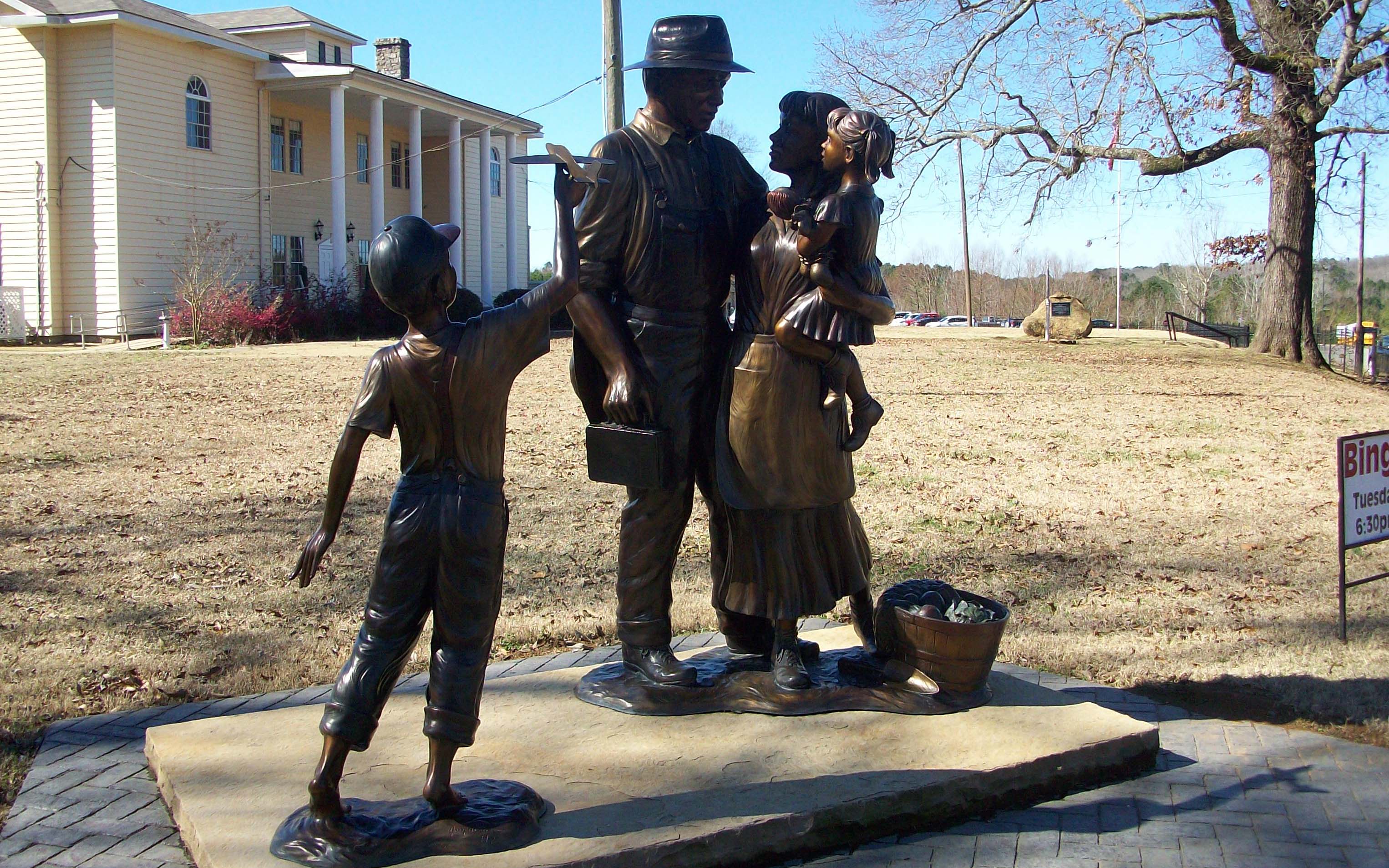Bauxite’s Hall of Memories
August 20-26, 2018
By Cody Lynn Berry
The tiny town of Bauxite in the heart of Saline County is little more today than a stop along Highway 183. In fact, if you knew nothing of it, you’d drive right through and never know what you’re missing. Locals know it as the cradle of the county. Bauxite is a former company-owned town that attracted many generations of immigrants from around the globe for work there. Because of that fact, most if not all Saline County’s oldest families can trace their ancestry back to that little town.
Bauxite has a long and rich history. In its prime, the town was bigger than any of its neighbors. In 1943, it was home to 20,000 people. Bauxite ore, a key ingredient in the production of aluminum, was discovered in the area in 1887. In 1891, State Geologist John C. Branner verified that discovery. After that, J. Ernest Smith and Robert S. Perry of the Southern Bauxite and Mining Company purchased large portions of land. In 1895, the General Bauxite Company moved in and bought those lands. The town of Perrysmith grew around the mines and in 1903, changed its name to Bauxite.
In 1899, the Pittsburgh Reduction Company sent John R. and his son J. Felton Gibbons to Bauxite. They carried out years of investigations and determined that Saline County Bauxite was so valuable that in 1907, they bought out the General Bauxite Company. After that, Alcoa was born and its subsidiaries the American Bauxite Company and the Republic Mining and Manufacturing Company. In Bauxite, employees and their families enjoyed all the amenities of a normal town.
There were schools, a post office, a movie theater, a store, a hospital and segregated housing additions. The living arrangements varied from tar paper shacks to large homes on paved streets. During hard times, company-owned gardens provided food for needy families. Running water came at no cost and electricity was also available.
The town’s first newspaper the Bauxite News ran from June 1920 to January 1921. It’s second, the Pick and Shovel, covered everything from school functions and sports to company news and ordinary town events. It ran from 1944 to 1958 and has become the greatest source of information on the town’s World War II years, when it was at its peak. Around 90 percent of all the aluminum used by Alcoa at that time came from Bauxite.
Other amenities provided by Alcoa were the Bauxite Community Hall and a nearby lake resort called Clear Lake. These were paid for by a small tax taken from employee’s paychecks. The Hall was dedicated on June 15, 1926. The Hall’s grounds included a nine-hole golf course, an indoor basketball court, and plenty of space for people to hang out.
In the late sixties, Alcoa decided it was cheaper to get bauxite from South America and the town was abolished. Residents were given the choice to stay or move on. Some stayed, some left, and some moved their houses to nearby Benton. Bauxite reincorporated in 1973. In 1986, the Alcoa Employee’s Descendants Association (AEDA) took ownership of the Hall, the Rucker House across the street, and the Bauxite Cemetery.
Today, the AEDA is known as the Bauxite Historical Association and Museum, or BHAM. Since 1986, BHAM has been collecting memories and storing them in the Hall. The collection is spread out among the Hall’s huge rooms. There, visitors can see thousands of photographs, artifacts, and documents that tell the story of Bauxite and its people.
Among the Hall’s artifacts are several strange and unique items. Two of those being the famous Bauxite Teeth and Alcoa’s aluminum threaded ball gown worn by Miss Arkansas at the Aluminum Bowl in 1956. It debuted at a fashion show in Paris, France. Smelting bauxite caused large amounts of fluoride to leech into the town’s drinking water. Over time, people’s teeth turned brown. Local dentists found these brown teeth to be much stronger than normal ones. Rumor has it this led to the introduction of fluoride in toothpastes, in small amounts, of course.
The Sally Donner Room to the left of the Hall’s entrance houses a library for researchers and the Bauxite Teeth. The Kimbrough Room on the right contains mining equipment, and geological samples. A small hallway leading from there into the Hines Room serves as a tribute to Bauxite’s ethnic diversity. The Hines Room or “War Room” pays tribute to Bauxite’s veterans. The Bono Room houses a large collection of sports memorabilia and the school’s Athletic Hall of Fame. Upstairs, the old Masonic Hall contains items such as Alcoa’s aluminum threaded gown, vintage furniture, and seats from Bauxite’s movie theater to name a few. Directly below the Masonic Hall is a large space that can be rented for weddings and other events.
For more information visit BHAM on Facebook.
PHOTO CAPTION:
‘Unsung Heroes’ depicts a miner leaving home for work. The Bauxite Community Hall rests in the background. (Photo by Cody Lynn Berry)



